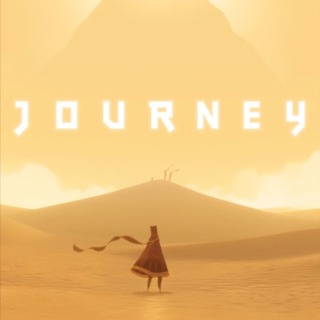Like a splendid live canvas bursting with colour and luminance, this short Journey is a breathtaking opus
Journey is different. Created by an independent studio behind the games like Flow and Flower, this latest title carries on in the tradition of minimalism established by its creators. Simple in every aspect, this is a game that strives to dazzle with its unique artistic style and relaxing simplicity, rather than overwhelm with textural complexity and countless game modes.
Journey is mesmerising in its humble beauty. The second you pick up the controller, you are treated to a stunning sight of endless rolling dunes with wind gingerly blowing powder across their surface and the sunlight glimmering and reflecting in each individual grain of sand. It is almost too much to take in, as you start ploughing through the thick substance step by step, your feet rustling softly while leaving shallow trails behind you. Your sole objective, a mysterious, almost ominous mountain with a glowing summit, looms in the distance.
There is no story to speak of, no clear premise and no character development. You play as a mystical sand creature, slender and graceful, adorned in a hooded robe with a long scarf tailing behind it. In many ways, your protagonist is a nameless, faceless, voiceless enigma, destined to follow a path to its final destination, visible from the very beginning far at the horizon's edge. Your unexplained quest is aided by a reverent deity, who shows you the path that lies ahead during cutscenes between levels.
Journey's gameplay is refreshingly basic. There are no traditional enemies to encounter, no combat and no deaths or respawns. This is a straightforward A to B traversal with occasional and straightforward platforming. You can walk or run, but the true joy of Journey's gameplay is in its other forms of parkour. When on a downward slope, the creature glides gracefully across the surface, accelerating downhill like a surfer sliding on golden sand. When airborne, you can perform a barrel roll by holding the jump button, but the height and distance of it is determined by the creature's magical scarf. Each level contains a limited number of hidden scarf fragments that extend the length of your thread-tail, thus prolonging the time you can glide though the air. The scarf's energy is easily depleted and must be recharged at special locations, scattered all around.
As you make progress toward your destination, the environments will shift from the barren dessert where you set off, across dilapidated derelict structures, through desolate urbanscape of long-perished civilisations, to abandoned underground caverns, before finally reaching the foot of the mountain, where sand turns to snow and weather conditions change dramatically. The uninhabitable environment here signals the approaching end, as you arduously count down your steps upward to the mountain top. The scenery remains magnificent in its variety, with weather and lighting effect adjusting accordingly to reflect time of day and environment. The sight of a setting sun painting swathes of vivid gold across hills of sand, as you weightlessly glide along, is unlike anything I've ever seen before.
But the beauty and grace is not destined to last - Journey is short, totalling at no more than 2 hours to complete, and with no difficulty setting, collectables or additional gamemodes, Journey has very little replayability.
Surprisingly, there is support for cooperative multiplayer, but as all other facets of the title it is barebones in its essence. At any point during your travels, anonymous random players from around the world can jump into your party at the beginning of any level and you can the same. Players can communicate with each other on a basic level by means of a hollow wail, like the one used by dolphins. Additionally, players can mutually recharge their scarves by simply approaching each other, making progress that much easier. You can disable the feature and chose to play solo, but ultimately, the addition of a nameless companion may soothe the loneliness of your Journey, and perhaps reinvigorate the experience for a second play-though.
If you have it in you to forgive its brief nature and the lack of additional content, Journey shines bright with artistic authenticity and unfettered simplicity. If there ever is a modern art gallery, where video games are recognised as a deserving art form and are accorded their own section, Journey would hang proudly on the wall as a masterpiece of its generation.

